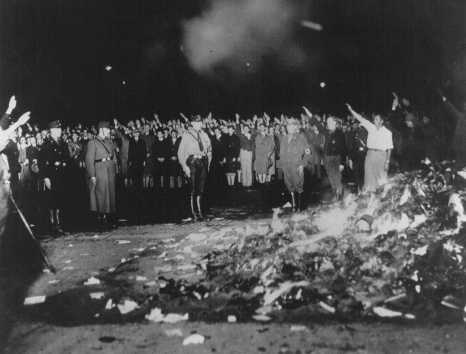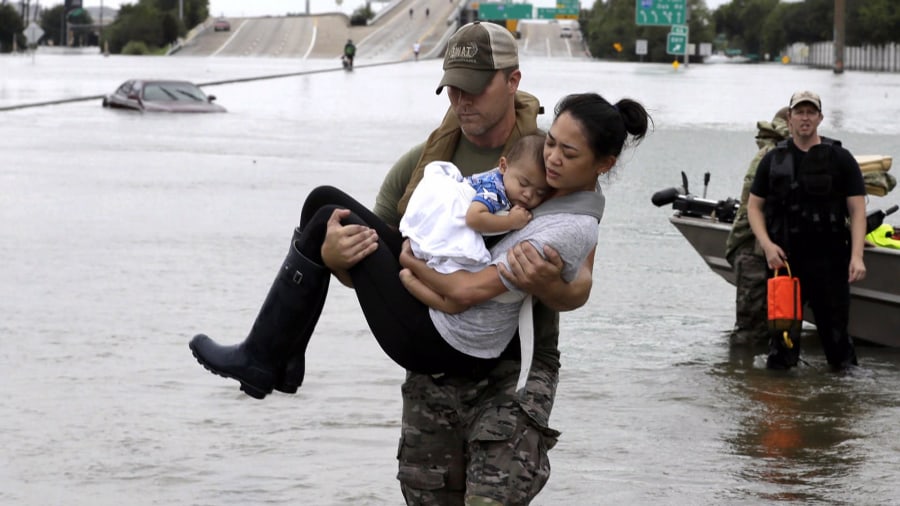Monthly Archives: September 2017
Interested in European Military Headgear?
One of the most exciting aspects of militaria collecting for me is when I can locate an item that can be connected to one of my family members’ military service. To date, I have predominantly made those connections with my ancestors who served in the United States Armed Forces. However, when I started searching for relevant militaria pieces (that would be relevant to my Canadian or British veteran ancestors), I discovered that if I had deep enough pockets, there would have been an opportunity to obtain something that could be associated with my 4th great-grandfather who served with the legendary 42nd Highland Regiment of Foot, The Black Watch.
With the research that I’ve conducted during the last several years, I’ve been focusing on those of my ancestors with military service. I’ve been following each branch of the tree, tracing back through each generation, some of which first reached the colonial shores in the late 1600s from Western Europe. Without boring you with the details, I have been successful in locating ancestors who served and fought in almost every war since the establishment of the colonies, including the French and Indian War.
As a veteran of the US Navy, my interest has been centered on those of my ancestors who wore the uniform of the United States. What I didn’t count on was finding veterans who fought for what my American ancestors would have called “the enemy.” One ancestor in particular was a member of one of the elite British units (which is still in existence) and fought against the forces of the US during the War of 1812. I discovered that still another of my American ancestors was taken prisoner by the British and actually met the enemy ancestor (I know, this sounds confusing).
During one of my subsequent militaria searches, I discovered an online auction house that had a listing for foreign military headgear that were some of the most beautifully pristine pieces I have ever seen. Not being educated in foreign militaria, I was caught up in the aesthetic aspects of each piece while I was almost completely ignorant as to authenticity, time period of use, or even the military history of the piece. But one lot in particular caught my attention.

This feather bonnet and glengarry cap of the 42nd Royal Highland Regiment of Foot is in pristine condition. It, along with dozens of other foreign military headgear pieces will be available at auction in early September (source: Rock Island Auction Company).
Prominently displayed as part of the group was an Officer’s Feather Bonnet and Glengarry Cap that was from 42nd Highland Regiment of Foot, The Black Watch, the unit which dates back to the early 18th century. Both headpieces featured ornate badges with the unit number prominently emblazoned at the center of the design. The condition of the hats were so spectacular that they appeared to be recent manufacture, however the quality of the items spoke to their age.
As I read the auction description, disappointment soon set in as I learned that the cap dated to 1885 and the bonnet was from the turn of the 20th century, probably from 1900. Any disappointment that I may have felt in learning of the relative recency of the pieces was assuaged by the reality that the lot probably sold for a price that is unrealistic for my budget (I didn’t bother following it through the auction close). It is okay to dream every once in a while, isn’t it?
Before I can start investing in anything from the 18th and 19th centuries, I need to spend a lot of time and resources solidifying my research on my ancestors.
I also need to start playing the lottery.
The Obscure War – Collecting the War of 1812
One of my hobbies – truth be told, it is more than just a hobby for me – is genealogy research. Specifically, I am interested in uncovering facts and details pertaining to those of my ancestors who served in combat or just in uniform for this country. As with any research project, each piece of verifiable data opens the door for new, deeper research. One thing I haven’t been able to do is to find a stopping point once that occurs.

This banner depicts Commodore Perry in a long boat with enlisted sailors. Banner was produced as part of the Centennial celebration of the War of 1812 (source: Collection of Curator Branch, Naval History and Heritage Command).
Due to the recency of that time period, researching veterans who served in the twentieth century may seem to be an easy task when one considers the sheer volume of paperwork that can be created for or associated with an individual service member. If one has the time and resources available, it can be relatively easy to obtain all the records connecting a soldier, sailor, airman or marine to every aspect of their service during World War II or Korea. However, this becomes increasingly difficult as you seek details for those who served in earlier times.
Booms in militaria markets occur around significant anniversaries which propel history enthusiasts into seeking artifacts and objects from these events. On April 2, 2017, the United States began to mark the centennial of her entry into WW1 (the date is the anniversary of President Wilson’s request to Congress for a formal declaration of war against Germany) which has ignited an interest in WWI militaria by existing and new militaria seekers, alike resulting in a significant spike in prices. The renewed interest is a repeat of another of the United States’ conflicts that occurred just a few years ago.
During 2012, several states and the U.S. Navy initiated commemorating the bicentennial of the War of 1812 (formally declared by Congress on June 18, 1812) and the year-long recognition of this monumental conflict between the United States and Great Britain. This war has seemingly been a mere footnote when taught in American schools, exceedingly overshadowed by the War for Independence or the War between the States, and very little documentation is available for research when compared to other more popular conflicts.
- Wooden box carved from the keel of the brig Siren (Syren), by C.H. Holst in 1855. The Syren was one of the first brigs built for the U.S Navy in 1803 at Philadelphia by Nathaniel Hutton. The Syren participated in the Barbary War, and the War of 1812. The ship changed her name to Siren in 1810. (source: Collection of Curator Branch, Naval History and Heritage Command).
- Wooden box carved from the keel of the brig Siren (Syren), by C.H. Holst in 1855. The Syren was one of the first brigs built for the U.S Navy in 1803 at Philadelphia by Nathaniel Hutton. The Syren participated in the Barbary War, and the War of 1812. The ship changed her name to Siren in 1810 (source: Collection of Curator Branch, Naval History and Heritage Command).
My ancestral history has confirmed that several lines in my family are early settlers of what became the United States. So far, I have been able to locate documentation verifying that three of my ancestors fought in support of the struggle for Independence. Several generations downstream from them shows an even more significant amount of family taking up arms during the Civil War. The documentation that is available in print and online is incredible when it comes to researching either of these two wars. But what about the conflicts in between – the War of 1812 in particular?
- Walking cane made from ivory and wood. The wood used to make this cane was salvaged from the USS Lawrence flag ship of Commodore Perry in 1840. The ship had been scuttled at the end of the war in Misery Bay Presque Isle PA (source: Collection of Curator Branch, Naval History and Heritage Command).
- A close-up of the USS Lawrence walking cane’s inscription plate (source: Collection of Curator Branch, Naval History and Heritage Command).
- This sword was presented to Lt. Thomas Holdup Stevens by the city of Charleston for his conduct during the Battle of Lake Erie on the 10th of September 1813. Stevens commanded the sloop Trippe and engaged in battle with the Queen Charlotte. The Trippe also assisted the Scorpion in pursuing and capturing two enemy vessels (source: Collection of Curator Branch, Naval History and Heritage Command).
- A close-up of the handle, grip and hilt of LT Thomas Holdup Stevens’ Sword (source: Collection of Curator Branch, Naval History and Heritage Command).
By chance, I was able to locate two veterans (family members) who fought in this 32-month long war with England. The strange thing about it is that one fought for the “enemy” and the other for the United States. Even more strange was that they met on the field of battle with the American being taken captive and subsequently guarded by the British soldier. At some point, the two became more than cordial enemies and the American POW’s escape was benefited by that friendship. Years later, the two veterans would meet (after the British veteran immigrated to North America) and the one-time adversaries would become neighbors. The American veteran would ultimately marry the former Brit’s daughter, forever linking the two families.

One of the pistols used by William Henry Harrison during his service in the War of 1812.
While researching the War of 1812 can be difficult for genealogists, collecting authentic militaria of the conflict poses an even greater challenge. Very little remains in existence and, of that, even less is in private hands making it next to impossible for individual collectors to obtain without paying exorbitant prices or being taken by unscrupulous sellers (or both).
To say that uniforms from the period are scarce is putting it very mildly. The ravages of time exact their toll on the natural fibers of the cloth (wool, cotton) and the suppleness of leather, making anything that survived to present day an extremely delicate item. Hardware such as buttons and buckles are more likely to be available and while less expensive than a tunic or uniform, they will still be somewhat pricey.
I have resigned myself to the idea that owning any militaria item from the first 100 years of our nation’s existence is out of the question choosing instead to marvel at the collections that are available within the confines of museums.
Showcasing Your Militaria Investment
What good is a collection if it is maintained behind a closet door (where mine tends to be), stored in the basement or locked in a trunk? We spend years gathering items and filling in gaps in our collections as we reach goals that, in some cases, could take a lifetime to achieve. Despite those successes, we fail when we choose to keep them under wraps, hidden from the eyes of our house guests.
Most collectors’ spouses raise objections to the idea of them bringing old, musty-smelling objects into the spaces that we regularly inhabit. Olive drab hardly matches any home decor and the idea of weapons, armament and mannequins occupying limited floor or wall space tends to create friction with our spouses or significant others.
When I can, I like to visit museums that choose to commit their valuable floor real estate to displaying military history. I enjoy seeing the care that was taken by the staff to draw from the collection a tasteful blend of artifacts to present specific themes or create visual representations of specific historic events. Knowing that too much can cause viewers to gloss over the display, missing the all of the details. Too few artifacts or vague information cards in a display can have a similar effect. In both cases, the efforts of the curator are laid to waste as the museum visitor ambles past the display.
Through my membership in the U.S. Militaria Forum, I have seen some very impressive personal collections with well thought out displays that rival any of the best museums in the United States. From the hand-crafted cases and cabinets to the tastefully selected art hung on the walls, these collectors demonstrate that their investment is something to share with others.
- Fleet Admiral Nimitz signs the documents, accepting the surrender of the Empire of Japan (source: U.S. Navy).
- Note the collar device insignia of Nimitz’ uniform and the tastefully simple display (source: Naval Academy Museum).
- Tastefully simplistic, the large display has a few items in order to emphasize the monumental significance of the event (source: Naval Academy Museum).

Take note of the mannequin’s altered ring finger on the left hand that matches Nimitz’ partial amputation from 1916 (source: Naval Academy Museum).
Not too long ago, the Naval Academy Museum shared some photos on their Facebook page of one of their latest displays that showcases one of the most historic events of the last century, the signing of the Instrument of Surrender aboard the USS Missouri. Presented is the uniform worn by Fleet Admiral Chester Nimitz on that September 1945 day in Tokyo Bay. The display clearly shows his khaki uniform with the rare 5-star insignia affixed to each collar. The museum staff went as far to alter the mannequin’s left ring finger to match Nimitz’s left hand: a portion of his finger was severed in 1916 by a diesel engine that he was demonstrating.
The key, limiting factor in my home is that I have a considerable lack of space. It is challenging enough to store my collection so the thought of propping up torsos to show my uniforms is nullified. Besides, it can be a little disturbing to walk into a room and see a still and quiet human-form at 4:00 AM as I prepare to head off to work.
 A few years ago, I was invited to participate in a public showing of my military baseball collection at our state fair in their hobby hall. My artifacts where showcased in and among adult and youth collections that were varied, ranging from pig-themed collectibles to artifacts from our nation’s bicentennial celebration. This year, I have yet another part of my militaria collection on display at the state fair. Being that the overwhelming military population (veterans, retirees, reservists and active duty personnel) is army and air force, I wanted to educate the citizenry on enlisted uniforms of the United States Navy. I gathered a few selections of my enlisted rating badges and uniforms to spotlight the history, designs and the ratings themselves. My wife and I visited the fair and stood in the distance to observe visitors to see how they respond to what I had on display. People-watching is fun but seeing people enjoying these artifacts is pleasing and provides some satisfaction to collecting, even if I can only experience it on rare occasions.
A few years ago, I was invited to participate in a public showing of my military baseball collection at our state fair in their hobby hall. My artifacts where showcased in and among adult and youth collections that were varied, ranging from pig-themed collectibles to artifacts from our nation’s bicentennial celebration. This year, I have yet another part of my militaria collection on display at the state fair. Being that the overwhelming military population (veterans, retirees, reservists and active duty personnel) is army and air force, I wanted to educate the citizenry on enlisted uniforms of the United States Navy. I gathered a few selections of my enlisted rating badges and uniforms to spotlight the history, designs and the ratings themselves. My wife and I visited the fair and stood in the distance to observe visitors to see how they respond to what I had on display. People-watching is fun but seeing people enjoying these artifacts is pleasing and provides some satisfaction to collecting, even if I can only experience it on rare occasions.
- Showing the 8-button Machinist’s Mate Chief (bullion) and Electrician (radio) 2/c from WWI uniforms backed by ratings, distinguishing marks and shoulder insignia patches and WWII warrant officer shoulder boards and devices.
- A selection of rating badges showing eras, specialties, date and manufacturer’s marks.
- A few other uniforms: 1905-1913 Coxswain, 1944 Ship’s Cook 1/c and a 1944 Aviation Radioman 3/c (with aerial gun pointer mark) next to a vintage naval academy midshipman rating badge and plebe cover.
Spotlight on private collector militaria displays
- “Belleau Wood Museum” – fabulous World War I Marine Corps displays.
- Chaplain Collection– focused on chaplains of all branches and all conflicts.
- General Officer Collection – one of the most impressive collections – this one focuses solely on officers who attained the rank of general or admiral
















